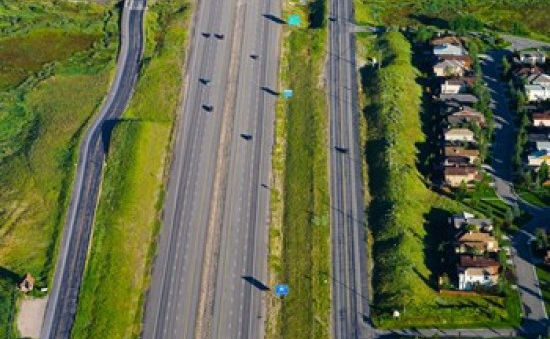Non- Places. Introduction to an Anthropology of Supermodernity
- Gire Calderon
- Oct 10, 2018
- 4 min read
Updated: Feb 27, 2019
From places to non places

Marc Augé (1935) is a french anthropology.
He From places to non places
According to Wikipedia, Marc Augé (1935) is a french anthropologist.
He began his studies studying African development, moved later on to European development
and lastly global development. He explores the changes in globalization worldwide. His book
“Non places” is Augé interpretation to his own visualization of space offering means to
decipher urban modernity. The text starts with a prologue behind his idea, it then continues
with his definition of places and non places, talks about supermodernity and it finishes with
the epilogue that includes ways to implement his theory.
The book analyses Augé’s concept of space, whether a space is ‘significant and meaningful’
which he calls place or the contrary which he calls ‘non place’.
In order to write about non places and places. We first need to explain Augé definition of
Supermodernity which he defines as the individual approach to new experiences and its
relation to the space directly related to the appearance and creation of non places. As Augé
expresses Supermodernity is in everything we live, from the escalator telling us to take right to
what it prohibits you, to the ‘Do not smoke’.
According to him, A place can be identified as a place as long as it rational, historical and
filled with identity, In contrast to a non place that does not have any of these characteristics.
He adds that a non place is a space of isolation and loneliness where no personal connections
are made. These places are of temporary use and are build to certain ends such as
transportation. Examples of some non places referred by Augé are airports, malls, motorways,
trains station and roads. The definition of these places are entirely subjective to the user. A
place and non place as stated by Augé are opposed polarities.
Augé explains that the space is what you perceive and analyze of it. In contrast to a tourist
with his phone taking arbitrary pictures and not being in the moment. He is perceiving space
as a non place.began his studies studying African development, moved later on to European development and lastly global development. He explores the changes in globalization worldwide. His book “Non places” is Augé interpretation to his own visualization of space offering means to decipher urban modernity. The text starts with an prologue behind his idea, it then continues with his definition of places and non places, talks about supermodernity and it finishes with the epilogue that includes ways to implement his theory.
The book analyses Augé’s concept of space, whether a space is ‘significant and meaningful’ which he calls place or in the contrary which he calls ‘non place’.
In order to write about non places and places. We first need to explain Augé definition of Supermodernity which he defines as the individual approach to new experiences and its relation to the space directly related to the appearance and creation of non places. As Augé expresses Supermodernity is in everything we live, from the escalator telling us to take right to what it prohibits you, to the ‘Do not smoke’.
According to him, A place can be identified as a place as long as it rational, historical and filled with identity, In contrast to a non place that does not have any of these characteristics. He adds that a non place is a space of isolation and loneliness where no personal connections are made. This places are of temporary use and are build to certain ends such as transportation. Examples of some non places referred by Augé are airports, malls, motorways, trains station and roads. The definition of this places are entirely subjective to the user. A place and non place as stated by Augé are opposed polarities.
Augé explains that the space is what you perceive and analyze of it. In contrast to a tourist with his phone taking arbitrary pictures and not being in the moment. He is perceiving space as a non place.

Another example of this, Is for some people a mall is a non place where people gather to buy
something specifically, a place of transition. But for some millennials, the mall is a place for
socialization where they gather to make or socialize with friends. Thus making the
interpretation of what is a non place subjective.

He argues how a place can become a non place and with the use of technology. The creation of
faster trains and new highways accelerate this ratio. He explains how in the past, trains used to
slow down for the user could read the name of the town but with the implementation of faster
trains they don’t anymore. Thus creating non places that user does not interact anymore.
Highways nowadays pass thru a town without the user interacting it with it.

In conclusion, I felt that the text was slightly based on the same idea as Foucault ‘heterotopias'
on how we define space, what we mentally make of it and our accessibility to it.
Questions:
Is technology changing the way we perceive places?
Are we developing nowadays more non places than places?
What are the similarities between Augé theory of non places and Foucault’s heterotopias?
References:
http://en.wikipedia.org/Marc_Augé



Comments